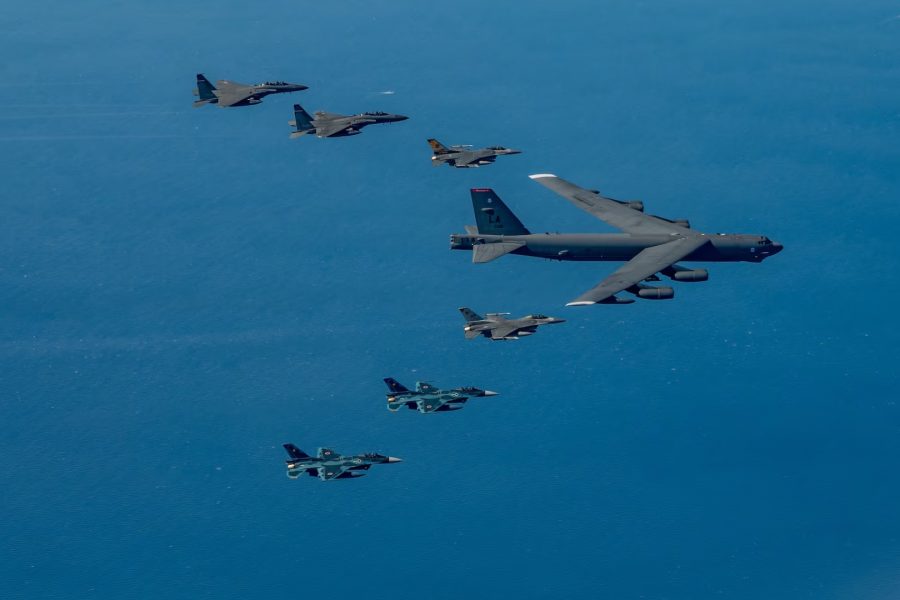The air forces of the U.S., South Korea and Japan held their first ever trilateral aerial exercise Oct. 22.
One American B-52 bomber and three U.S. F-16s flew alongside two F-15Ks from the Republic of Korea Air Force, and four F-2s from the Japan Air Self-Defense Force.
The exercise marks a major milestone in the trilateral relationship between the allies, which saw a historic boost in August when U.S. President Joe Biden, Japanese Prime Minister Fumio Kishida, and Republic of Korea (ROK) President Yoon Suk Yeol met at Camp David, Md., for the first ever standalone meeting of the three countries’ leaders and pledged to hold “annual, named, multi-domain trilateral exercises”.
“This aerial exercise builds on the continued interoperability of our collective forces and demonstrates the strength of the trilateral relationship with our Japan and Republic of Korea allies,” U.S. Pacific Command said in a release.
The drill took place in the southern part of the peninsula, where South Korea and Japan’s Air Defense Identification Zones overlap, according to the ROKAF.
In the past, U.S. Air Force aircraft have often conducted bilateral exercises with Japan and South Korea in succession. Just last week, the JASDF and USAF held a joint drill with two B-52s and a multiple fighter jets on Oct. 18, and a B-52 landed in South Korea for the first time in three decades after executing flyovers at the 2023 Seoul International Aerospace and Defense Exhibition.
Following the exhibition, North Korea’s state-run media KCNA criticized the B-52’s presence in the peninsula, calling it an “nuclear war provocative moves of the United States.”
The B-52 Stratofortresses, fom Barksdale Air Force Base, La., have subsequently flown to Andersen Air Force Base, Guam, for a Bomber Task Force rotation, according to Pacific Air Forces. The Stratofortress, known as the BUFF, is the Air Force’s primary standoff cruise missile carrier that can carry nuclear or precision guided conventional ordnance, with worldwide precision navigation capability.
While the Oct. 22 air drill marks the three countries first joint aerial collaboration, the three allies have conducted naval exercises before. Earlier this month, Washington, Seoul, and Tokyo orchestrated a naval exercise with the nuclear-powered aircraft carrier USS Ronald Reagan in international waters off South Korea’s southern Jeju Island.
The exercise was conducted to enhance their ability to detect and track targets, as well as data sharing in response to potential provocations by Pyongyang.
South Korea’s Navy also disclosed that this exercise incorporated training for intercepting North Korean weapons of mass destruction.
The three countries have also conducted a trilateral ballistic missile defense exercise earlier this year with the USS Benfold. At the trilateral summit this summer, leaders also agreed to establish a shared real-time missile warning system.
As the U.S., Japan, and South Korea tighten their ties, a potential trio of competitors may also be forming. In September, Seoul’s National Intelligence Service revealed that Russian Defense Minister Sergei Shoigu proposed a possible trilateral naval exercise with North Korea and China while meeting with North Korean leader Kim Jong Un in July.
This emerging “trilateral imperialist partnership,” according to Bruce Bennet at the RAND Corporation, not only raises concerns about the prolonged conflict in Ukraine and its consequences but also presents a concerning potential for future conflicts involving nuclear weaponry.

